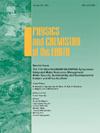Groundwater quality in Sargodha City, Pakistan: Comprehensive research of geochemical modeling, groundwater quality assessment, and risk evaluation
IF 3
3区 地球科学
Q2 GEOSCIENCES, MULTIDISCIPLINARY
引用次数: 0
Abstract
Groundwater, an indispensable global resource, faces escalating contamination threats, jeopardizing human health and environmental sustainability. This study offers detailed insights into the quality of the groundwater, its drinking suitability, and associated human health risks in Sargodha City, Pakistan. Employing hydrogeochemical analysis, inverse geochemical modeling, groundwater quality index, and human health risk evaluation, this research highlights widespread exceedances of WHO drinking water standards, particularly in TDS, EC, TH, Na+, Ca2+, Mg2+, SO42−, Cl−, HCO3−, NO3–N, and As levels, signifying that a significant portion of the groundwater is unfit for consumption. Hydrochemical facies analysis reveals a dominance of the Na–Cl type. Water–rock interactions, cation exchange, and anthropogenic influences are the primary factors shaping groundwater hydrochemistry in the region. Saturation indices and inverse geochemical modeling demonstrated intricate geochemical processes involving both mineral precipitation and dissolution. Notably, the GWQI reveals a diverse spectrum of water quality, with 50% of the samples exhibiting excellent to good quality, 29% falling into the poor to extremely poor category, and 21% deemed unfit for drinking. Health risk assessment reveals alarming carcinogenic risks from As, affecting children (70.8%) and adults (83.35%), while 8.3% of the samples indicate non-carcinogenic risks. Conversely, NO3–N presents acceptable non-carcinogenic risks across all samples. The total hazard index spans between 0.14 and 1.90 for adults and 0.16 to 2.23 for children, underscoring the heightened vulnerability of children. This study advances the understanding of groundwater contamination dynamics in urbanized regions, offering insights to safeguard public health and ensure sustainable water management in areas with similar hydrogeochemical conditions.
巴基斯坦 Sargodha 市的地下水质量:地球化学建模、地下水质量评估和风险评价综合研究
地下水是不可或缺的全球资源,但却面临着不断升级的污染威胁,危及人类健康和环境的可持续发展。本研究详细介绍了巴基斯坦 Sargodha 市的地下水质量、其饮用适宜性以及相关的人类健康风险。通过水文地质化学分析、反地球化学建模、地下水质量指数和人类健康风险评估,本研究发现了世界卫生组织饮用水标准的普遍超标现象,尤其是 TDS、EC、TH、Na+、Ca2+、Mg2+、SO42-、Cl-、HCO3-、NO3-N 和 As 的含量,这表明相当一部分地下水不适合饮用。水化学面分析表明,Na-Cl 类型占主导地位。水与岩石的相互作用、阳离子交换和人为影响是影响该地区地下水水化学的主要因素。饱和度指数和反地球化学模型显示了涉及矿物沉淀和溶解的复杂地球化学过程。值得注意的是,GWQI 显示了水质的多样性,50% 的样本水质为优至良,29% 的样本水质为差至极差,21% 的样本水质被认为不适合饮用。健康风险评估显示,砷具有令人担忧的致癌风险,影响儿童(70.8%)和成人(83.35%),而 8.3% 的样本显示存在非致癌风险。相反,NO3-N 在所有样本中显示出可接受的非致癌风险。成人的总危害指数介于 0.14 和 1.90 之间,儿童的总危害指数介于 0.16 和 2.23 之间,这表明儿童更容易受到危害。这项研究加深了人们对城市化地区地下水污染动态的了解,为在具有类似水文地质化学条件的地区保障公众健康和确保可持续水资源管理提供了启示。
本文章由计算机程序翻译,如有差异,请以英文原文为准。
求助全文
约1分钟内获得全文
求助全文
来源期刊

Physics and Chemistry of the Earth
地学-地球科学综合
CiteScore
5.40
自引率
2.70%
发文量
176
审稿时长
31.6 weeks
期刊介绍:
Physics and Chemistry of the Earth is an international interdisciplinary journal for the rapid publication of collections of refereed communications in separate thematic issues, either stemming from scientific meetings, or, especially compiled for the occasion. There is no restriction on the length of articles published in the journal. Physics and Chemistry of the Earth incorporates the separate Parts A, B and C which existed until the end of 2001.
Please note: the Editors are unable to consider submissions that are not invited or linked to a thematic issue. Please do not submit unsolicited papers.
The journal covers the following subject areas:
-Solid Earth and Geodesy:
(geology, geochemistry, tectonophysics, seismology, volcanology, palaeomagnetism and rock magnetism, electromagnetism and potential fields, marine and environmental geosciences as well as geodesy).
-Hydrology, Oceans and Atmosphere:
(hydrology and water resources research, engineering and management, oceanography and oceanic chemistry, shelf, sea, lake and river sciences, meteorology and atmospheric sciences incl. chemistry as well as climatology and glaciology).
-Solar-Terrestrial and Planetary Science:
(solar, heliospheric and solar-planetary sciences, geology, geophysics and atmospheric sciences of planets, satellites and small bodies as well as cosmochemistry and exobiology).
 求助内容:
求助内容: 应助结果提醒方式:
应助结果提醒方式:


